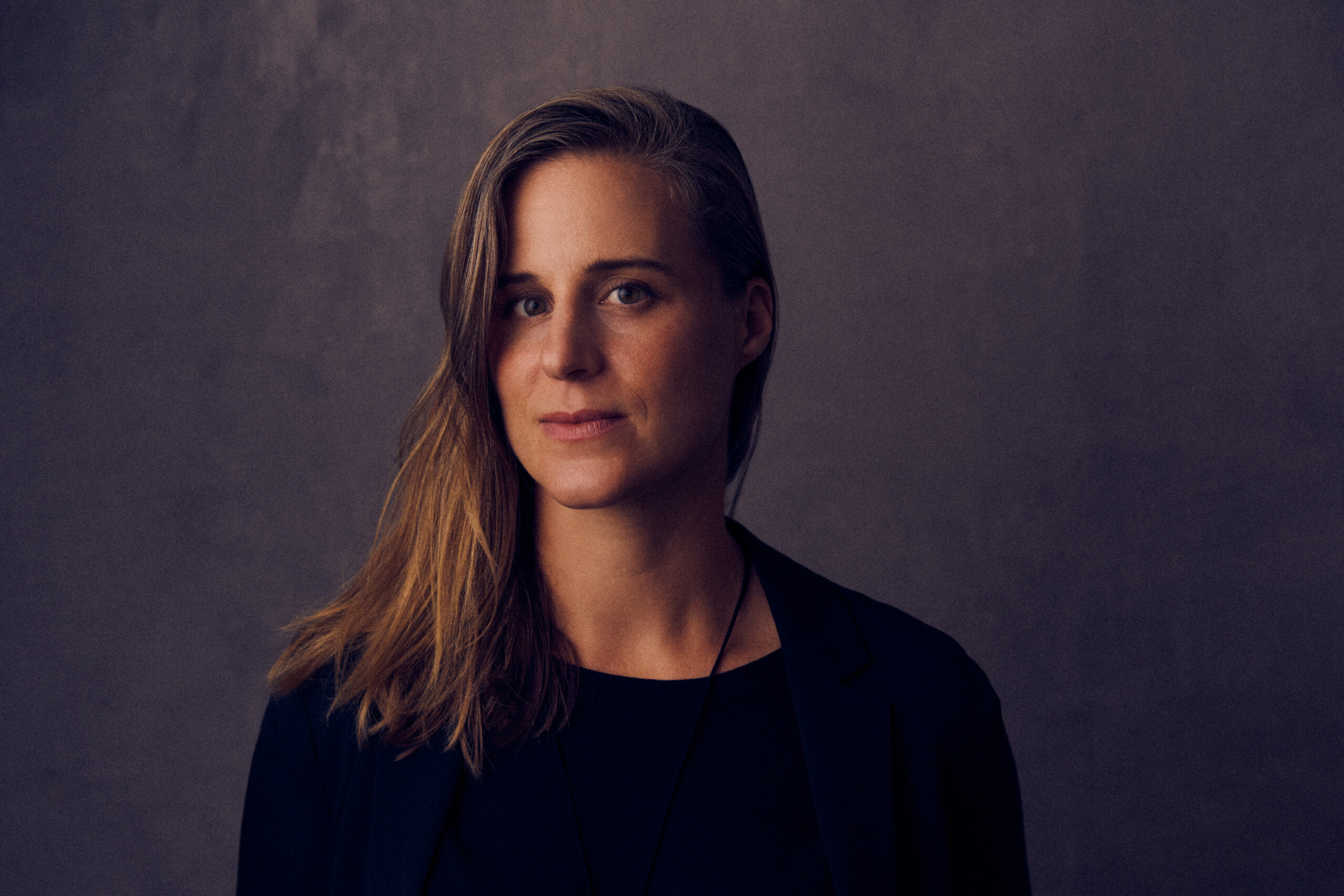
The nuns harvest penises from the tree and pop them in their pockets. The tips are coloured in red, matching the Latin letters above them. They don’t look particularly impressed.
Lauren Groff found this 14th-century illustration while researching her latest novel, Matrix. "They’re called drolleries," the American novelist explains, "drawn by bored clerics on the side of manuscripts. There's tonnes of rabbits picking up weapons and trying to slaughter priests. They’re wonderful". It was through these subversive drawings that Groffbegan to reconsider what she thought she knew of the Medieval era.
With playful humour, queer lust, and plenty of historical license, Matrix tells the story of Marie de France, the 12th-century figure considered the first woman to write poetry in French. Groff first fell in love with Marie when she was learning to translate her work in college. "For the past 20-some years I've carried her around on my back as a sort of spirit animal". Groff’s Marie is described as a "giantess"; she wanted a character that takes up space in history.
'Inventing a person able to talk about ideas of power, of autonomy, in a country where we're losing our autonomy as women, felt necessary'
For a long time, Groff was avidly against writing historical fiction, seeing it as "literary tourism". But then she realised she could use it as a tool to talk about the contemporary world. She describes Matrix like a tuning fork, "the resonance going back and forth over the course of a millennium". She was writing in the middle of the Trump era, too overwhelmed to write directly in the present. "Coming back to Marie," she says, "and inventing a person able to talk about ideas of power, of autonomy, in a country where we're losing our autonomy as women, felt necessary."
Matrix follows the course of Marie’s life, from being kicked out of the royal French court, to growing up and growing old in an abbey in the muddy English countryside, where she takes charge as the Abbess. In Groff’s story, men are just shadows. The lens is tightly focused on women: first Queen Eleanor, who Marie is devoted to, and later a close-knit community of female outcasts in the abbey. "It felt important to do for this book what has been done through history," Groff says, "which is to push the female characters to the side in basically every narrative up until about a century ago." Her reversal is subtle, quietly giving all the power over to the women. Even Jesus isn’t described – the focus is on the cross rather than the body.
The decision to write Marie as gay, Groff says, was obvious from the start. "It’s who she is. I don't know who the historical person is, of course, but she [Groff’s Marie] is a very carnal person. She experiences the world through her body first. She's a woman of great hunger. Also, I didn't want men in the book," she laughs, "and it's necessary to me that there be sex in a book." She shrugs. "I'm bisexual, so it wasn't writing out of non-experience. It was just necessary in her character from the beginning."
There are traces of lesbianism in Medieval European records, if you look for them hard enough. "People have been gay since the dawn of time," Groff says, "but there's not a whole lot because it's not really written down." Throughout history, lesbianism has been ignored from the written records for fear of encouraging it in others, with one 15th-century trial giving the act "no name in the proceedings". For those who were punished, their sin wasn’t taken as seriously as male homosexuality. In one Medieval penitential, a record of church rules and transgressions, a woman who "practices vice with a woman" gets three years of penance, while a man who does the same with another man gets 10.
Because laws were written by priestly men, Groff says, they were two steps removed from the female body. "The belief was that if there was no penis involved, it was not actually sex. So the possibility of women being able to have sex with one another was so unimaginable that you couldn't write a law about it."
In Marie’s abbey, the power balance shifts repeatedly, with the Abbess sometimes overstepping the line, to the outrage of the other nuns. But nothing is in the book that Groff hadn’t found some sort of precedent for in the records. "You can find elements of, say, a nun performing mass," she says, "you can find elements of the masculine endings of the Latin changed to feminine."
One character, who makes beautiful illustrations on the manuscripts, has blue teeth. ‘In Germany, they dug up the remains of a 12th-century nun and found lapis lazuli embedded in the teeth. She either was eating lapis lazuli as a sort of medication, or she was sucking the ends of the paintbrush, therefore was actually involved in doing illuminations on the manuscripts."
But there were times when Groff went off-piste. In early drafts, a lot of the plot hinged around a rosary. When her friend Dr Katy Bugyis – whose lecture on the liturgy of Medieval nuns inspired the book in the first place – read through it, she pointed out that rosaries weren’t invented until the mid 13th century.
Writing the book led to greater realisations than purely historical ones. As part of her research for Matrix, Groff spent a new days in Abbey of Regina Laudis in Connecticut, helping the nuns in their work – "It was November, so I was pulling out tomato plants and chopping wood" – and hearing the masses. "To hear the singing is very different in person to hearing it on recording. You're hearing imperfect voices, and the way that their faces are registering the presence of other nuns, the irritations and the love when someone comes up and speaks." The way they spend their lives caring for eachother, she says, "changed my perception of the way that we should be living."
Matrix is Groff’s fifth book. Her last novel, 2015’s Fates and Furies, shot to fame, with Obama calling it his favourite book of the year. "It’s a profoundly weird book," Groff says, "and so the fact that I've sold a lot of copies is very strange to me." By the time the book came out she had distanced herself enough from the response. "Thank god, because otherwise I think it can ruin you."
'She has one project that’s been going on for 18 years'
Groff approaches each new story with a sense of demolition. "I've tried to write subsequent books that in some ways turn back and destroy different parts of the previous book." She frequently ditches drafts of books until one drags itself out of the pile and continues to speak to her. She has one project that’s been going on for 18 years.
Between Fates and Furies and Matrix, Groff wrote another novel, which she hopes will be published in 2023. She sees this book, set in 1609, as a triptych with Matrix and the book she’s working on now, which takes place in the current day. Though their stories and characters are entirely different, the trio share thematic ideas about the role of religion, particularly in climate change, and women coming up against the borders of their societies. By pinpointing these moments in time, Groff says, "I want to understand how we got to where we are now."
The Medieval era is often misunderstood to be dark, dingy, violent and ignorant. Matrix gently dismantles this stereotype. Groff’s medieval landscape may be gruesome and violent – nuns play Judith with a severed head, bodies bleed, mud seeps, things don’t smell but rather stench – there is also vivid pleasure, incredible intelligence, and vision. Friendships blossom. Kindnesses abound.
"I came into thinking about the medieval period probably with more solemnity and darkness than I should have," Groff says. "But it was in the process of researching that I discovered how much humour there was. They're just like us. Even though the situation was more full of lice and mud, they still found great pleasure in the world and in their bodies. It was a time of light as well."
What did you think of this article? Email editor@penguinrandomhouse.co.uk and let us know.
Image: Stuart Simpson/Penguin
